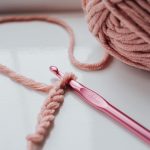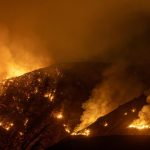You rely on Kevlar and Nomex because they combine strength, heat resistance, and durability to keep you safe in the toughest firefighting conditions. Kevlar offers incredible cut and abrasion resistance while staying lightweight, and Nomex protects you from intense heat without sacrificing comfort. Together, they create gear that’s strong, flexible, and heat resistant, letting you move freely and stay protected. Discover how their unique qualities work together to meet your demanding needs.
Table of Contents
Key Takeaways
- Kevlar provides exceptional strength and cut resistance, enhancing firefighter gear durability without adding weight.
- Nomex offers superior heat and flame resistance, protecting firefighters from high temperatures and preventing burns.
- Combined, Kevlar and Nomex deliver a balance of durability, heat protection, and comfort for demanding firefighting conditions.
- Advanced fabric blends using both materials improve tear resistance, thermal protection, and breathability for enhanced safety.
- Proper maintenance of Kevlar and Nomex gear ensures lasting performance and reliability during critical firefighting operations.
The Origins of Kevlar and Nomex
Kevlar and Nomex both originated from groundbreaking research in the 1960s aimed at creating strong, heat-resistant materials.
You mightn’t realize it, but both fibers came from DuPont’s efforts to develop innovative solutions for industrial safety and military applications.
Kevlar was designed to be incredibly strong and lightweight, perfect for bulletproof vests and protective gear.
Kevlar offers unmatched strength and lightness, ideal for bulletproof vests and essential protective gear.
Nomex, on the other hand, was engineered to resist heat and flames, making it ideal for firefighters and race car drivers.
When you understand their origins, you see why these fabrics complement each other in firefighter gear.
Kevlar handles abrasions and impacts, while Nomex provides thermal protection.
Together, they reflect decades of focused innovation to keep you safe in extreme conditions.
Key Properties of Kevlar Fabric
When you gear up for firefighting, you need materials that won’t let you down under pressure. Kevlar fabric offers exceptional strength and durability, making it ideal for your protective gear.
It’s incredibly resistant to cuts and abrasions, so it stands up to rough environments and sharp debris. Kevlar also has outstanding heat resistance, protecting you from intense flames and high temperatures.
Despite being lightweight, it provides excellent tensile strength, which means your gear stays tough without weighing you down. Plus, Kevlar’s low elongation keeps your clothing from stretching or deforming during action, ensuring a reliable fit.
These properties combine to deliver protection and comfort, helping you stay safe while you tackle dangerous fires. Kevlar truly is a crucial component in your firefighting arsenal.
Essential Characteristics of Nomex Fabric
Although firefighter gear needs to withstand extreme heat and flames, Nomex fabric delivers reliable protection without sacrificing comfort.
Firefighter gear must endure intense heat, and Nomex offers strong protection while keeping comfort intact.
When you wear Nomex, you benefit from its unique combination of strength and breathability, making long shifts more bearable.
Here are three essential characteristics of Nomex fabric:
- Heat and Flame Resistance – Nomex resists high temperatures and won’t melt or drip, protecting you from burns.
- Durability – It stands up to daily wear and tear, ensuring your gear lasts through tough conditions.
- Lightweight Comfort – Nomex is lighter than many alternatives, allowing you to move freely without feeling weighed down.
These qualities make Nomex a vital material for firefighter gear, balancing safety and comfort effectively.
How Kevlar and Nomex Complement Each Other
You’ll find that Kevlar and Nomex work together by combining heat resistance with exceptional durability.
Kevlar adds strength without weighing you down, while Nomex keeps you comfortable and protected against flames.
Together, they create gear that meets the demanding needs of firefighters.
Heat Resistance and Durability
Heat resistance and durability play essential roles in firefighter gear, and Kevlar and Nomex work together to provide both. When you wear gear combining these fabrics, you benefit from their unique strengths that keep you safe in extreme conditions.
Kevlar offers exceptional tensile strength, protecting against tears and abrasions, while Nomex provides superior thermal resistance to intense heat and flames. Here’s how they complement each other:
- Kevlar reinforces gear durability, resisting mechanical damage during rough activities.
- Nomex withstands high temperatures, preventing heat transfer to your skin.
- Together, they maintain structural integrity under fire exposure, ensuring long-lasting protection.
This synergy means your gear won’t fail when you need it most, keeping you safer on the job.
Lightweight and Comfort Benefits
Beyond their strength and heat resistance, Kevlar and Nomex also enhance the comfort and wearability of firefighter gear.
When you wear gear made from these materials, you’ll notice it’s surprisingly lightweight, which helps reduce fatigue during long, intense shifts.
Kevlar provides exceptional toughness without adding bulk, while Nomex offers softness and flexibility, allowing you to move freely.
Together, they create a balanced fabric that resists heat and flames but doesn’t weigh you down or restrict your mobility.
This combination means you stay protected and comfortable, even in extreme conditions.
The Role of Kevlar and Nomex in Firefighter Protection
Firefighters rely on advanced materials like Kevlar and Nomex to stay safe in extreme conditions.
These fabrics form the backbone of your protective gear, offering vital resistance when you face intense heat and flames.
Kevlar provides exceptional strength and cut resistance, while Nomex excels at thermal protection and flame resistance.
Kevlar offers unmatched strength and cut resistance; Nomex delivers superior heat and flame protection.
Together, they shield you effectively from hazards.
Here’s how they protect you:
- Heat and Flame Resistance: Nomex fibers char instead of melting, reducing burn risk.
- Cut and Abrasion Resistance: Kevlar reinforces your gear against sharp debris and rough surfaces.
- Durability Under Stress: Both fabrics maintain integrity during intense fires, ensuring your gear doesn’t fail when you need it most.
Comparison With Traditional Firefighter Materials
How do Kevlar and Nomex stack up against traditional firefighter materials?
You’ll find that these advanced fabrics offer superior heat resistance and durability compared to older materials like cotton or wool. Traditional fabrics can absorb moisture and degrade quickly under extreme heat, but Nomex resists flames and doesn’t melt, while Kevlar provides exceptional strength and cut resistance.
This means your gear stays intact longer and protects you better during intense fires. Plus, Kevlar and Nomex are lighter, which reduces fatigue and improves your mobility on the job.
While traditional fabrics served well in the past, you’ll appreciate the enhanced protection and comfort that Kevlar and Nomex bring to modern firefighter gear, helping you face hazards with greater confidence.
Innovations in Firefighter Gear Using Kevlar and Nomex
While traditional materials laid the foundation, innovations using Kevlar and Nomex have revolutionized firefighter gear, making it stronger, lighter, and more protective.
Innovations with Kevlar and Nomex have transformed firefighter gear into stronger, lighter, and more protective equipment.
You now benefit from advanced fabric blends that enhance durability without adding bulk. These improvements directly enhance your mobility and safety on the job.
Here are three key innovations you’ll appreciate:
- Enhanced Thermal Resistance: Kevlar and Nomex layers are engineered to withstand higher temperatures, protecting you from extreme heat and flames.
- Improved Tear and Abrasion Resistance: The fabrics resist damage from sharp objects and rough surfaces, guaranteeing your gear lasts longer.
- Lightweight and Breathable Designs: New fabric weaves allow better airflow, reducing heat stress and increasing comfort during long operations.
These advancements guarantee you stay safer and more comfortable in hazardous environments.
Care and Maintenance of Kevlar and Nomex Gear
To keep your Kevlar and Nomex gear in top shape, you need to follow proper cleaning procedures that avoid harsh chemicals and high heat.
Storing your gear in a cool, dry place away from direct sunlight will also help maintain its protective qualities.
Taking these steps guarantees your gear stays reliable when you need it most.
Cleaning Procedures
Since firefighter gear faces intense exposure to heat, smoke, and contaminants, you need to clean Kevlar and Nomex fabrics carefully to maintain their protective qualities.
Proper cleaning removes harmful residues without compromising the fabric’s integrity. Follow these steps:
- Use mild detergents: Avoid bleach or fabric softeners; they can degrade fibers and reduce flame resistance.
- Cold or warm water wash: Use gentle cycles to prevent damage and preserve fabric strength.
- Air dry only: High heat from dryers can weaken fibers, so let your gear dry naturally, away from direct sunlight.
Storage Best Practices
Proper storage plays an essential role in preserving the protective qualities of your Kevlar and Nomex gear.
Always store your gear in a cool, dry place away from direct sunlight, heat sources, or chemicals that could degrade the fibers.
Hang your gear on wide, padded hangers to maintain its shape and prevent creases or stress points.
Avoid plastic bags or airtight containers, as they can trap moisture and promote mildew growth.
Ascertain your storage area is well-ventilated to keep the fabric fresh and dry.
Regularly inspect your gear for signs of damage or contamination before storing it.
Real-World Performance in Firefighting Scenarios
When you step into a blazing building, Kevlar and Nomex fabrics stand between you and extreme heat, flames, and hazardous debris.
These materials aren’t just theoretical—they prove their worth every time you face dangerous conditions.
Here’s how they perform in real firefighting scenarios:
- Heat Resistance: Nomex resists ignition and insulates your body from intense heat, helping prevent burns.
- Durability: Kevlar’s exceptional strength shields you from cuts and abrasions caused by sharp objects and falling debris.
- Comfort and Mobility: Both fabrics offer flexibility and breathability, allowing you to move quickly and stay cool under pressure.
Together, Kevlar and Nomex provide balanced protection and comfort, empowering you to tackle fires safely and effectively.
Future Developments in Protective Fabrics for Firefighters
As firefighting challenges evolve, so do the fabrics designed to protect you. Future developments focus on enhancing durability, heat resistance, and comfort without adding bulk.
Researchers are blending Kevlar and Nomex with advanced fibers like graphene and carbon nanotubes to boost strength and thermal stability. Smart textiles embedded with sensors will soon monitor your essential signs and environmental conditions in real-time, alerting you to danger.
Innovations in moisture-wicking and antimicrobial treatments aim to keep you dry and reduce health risks. Lightweight, flexible materials will improve your mobility during intense operations.
Ultimately, these advancements will guarantee your gear adapts to the unpredictable hazards you face, providing better protection and support when you need it most. Staying informed on these innovations helps you choose the best gear for your safety.
Frequently Asked Questions
Can Kevlar and Nomex Fabrics Be Recycled After Use?
Think of Kevlar and Nomex as sturdy puzzle pieces; recycling them isn’t straightforward. You can’t just toss them in recycling bins, but specialized processes exist. You’ll need to find facilities equipped to handle their unique fibers.
Are There Environmental Concerns in Producing Kevlar and Nomex?
Yes, you should know producing Kevlar and Nomex involves energy-intensive processes and chemical use, which can impact the environment. However, manufacturers are working to reduce emissions and waste, aiming for greener production methods over time.
How Do Kevlar and Nomex Fabrics Perform in Extreme Cold Conditions?
You’ll find that Kevlar and Nomex fabrics maintain their strength and flexibility even in extreme cold. They won’t become brittle, so your gear stays protective and reliable when temperatures drop considerably.
What Are the Cost Differences Between Kevlar/Nomex and Other Materials?
You’d expect the cheapest gear to be the best, right? Well, Kevlar and Nomex cost more upfront but save you money by lasting longer and protecting better than cheaper, less durable materials.
Can Kevlar and Nomex Fabrics Be Customized for Different Firefighter Roles?
You can customize Kevlar and Nomex fabrics to fit different firefighter roles by adjusting thickness, layering, and treatments. This flexibility lets you balance protection, comfort, and mobility based on specific job demands and environments.
- Tetron Fabric for Accessories: Design and Usage Tips - June 17, 2025
- Tetron Fabric for Footwear: Style and Durability Guide - June 17, 2025
- Tetron Fabric for Automotive Applications: Durability and Performance - June 17, 2025







